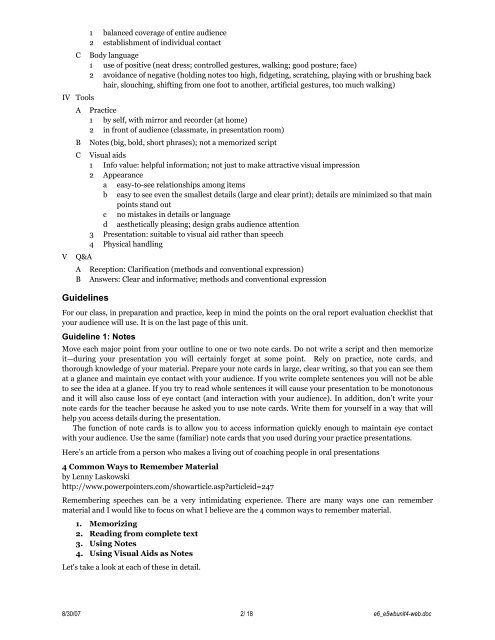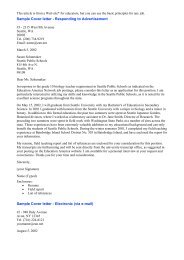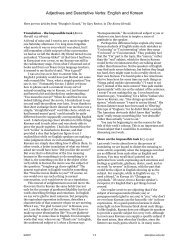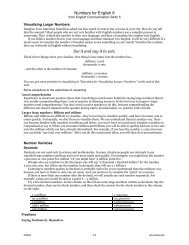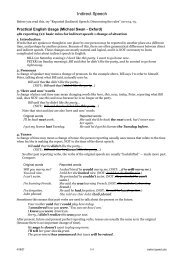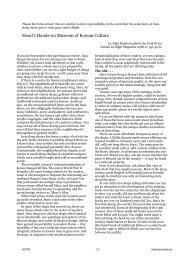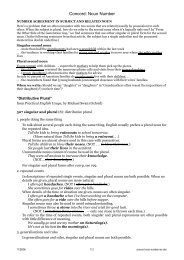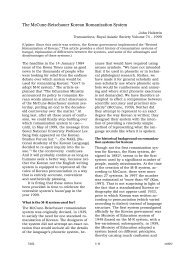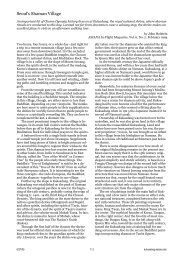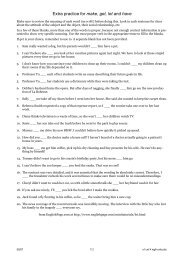Oral Presentations (International English Skills 1 ... - Korea Mosaic
Oral Presentations (International English Skills 1 ... - Korea Mosaic
Oral Presentations (International English Skills 1 ... - Korea Mosaic
You also want an ePaper? Increase the reach of your titles
YUMPU automatically turns print PDFs into web optimized ePapers that Google loves.
1 balanced coverage of entire audience<br />
2 establishment of individual contact<br />
C Body language<br />
1 use of positive (neat dress; controlled gestures, walking; good posture; face)<br />
2 avoidance of negative (holding notes too high, fidgeting, scratching, playing with or brushing back<br />
hair, slouching, shifting from one foot to another, artificial gestures, too much walking)<br />
IV Tools<br />
V<br />
A<br />
B<br />
C<br />
Practice<br />
1 by self, with mirror and recorder (at home)<br />
2 in front of audience (classmate, in presentation room)<br />
Notes (big, bold, short phrases); not a memorized script<br />
Visual aids<br />
1 Info value: helpful information; not just to make attractive visual impression<br />
2 Appearance<br />
a easy-to-see relationships among items<br />
b easy to see even the smallest details (large and clear print); details are minimized so that main<br />
points stand out<br />
c no mistakes in details or language<br />
d aesthetically pleasing; design grabs audience attention<br />
3 Presentation: suitable to visual aid rather than speech<br />
4 Physical handling<br />
Q&A<br />
A Reception: Clarification (methods and conventional expression)<br />
B Answers: Clear and informative; methods and conventional expression<br />
Guidelines<br />
For our class, in preparation and practice, keep in mind the points on the oral report evaluation checklist that<br />
your audience will use. It is on the last page of this unit.<br />
Guideline 1: Notes<br />
Move each major point from your outline to one or two note cards. Do not write a script and then memorize<br />
it—during your presentation you will certainly forget at some point. Rely on practice, note cards, and<br />
thorough knowledge of your material. Prepare your note cards in large, clear writing, so that you can see them<br />
at a glance and maintain eye contact with your audience. If you write complete sentences you will not be able<br />
to see the idea at a glance. If you try to read whole sentences it will cause your presentation to be monotonous<br />
and it will also cause loss of eye contact (and interaction with your audience). In addition, don’t write your<br />
note cards for the teacher because he asked you to use note cards. Write them for yourself in a way that will<br />
help you access details during the presentation.<br />
The function of note cards is to allow you to access information quickly enough to maintain eye contact<br />
with your audience. Use the same (familiar) note cards that you used during your practice presentations.<br />
Here’s an article from a person who makes a living out of coaching people in oral presentations<br />
4 Common Ways to Remember Material<br />
by Lenny Laskowski<br />
http://www.powerpointers.com/showarticle.asparticleid=247<br />
Remembering speeches can be a very intimidating experience. There are many ways one can remember<br />
material and I would like to focus on what I believe are the 4 common ways to remember material.<br />
1. Memorizing<br />
2. Reading from complete text<br />
3. Using Notes<br />
4. Using Visual Aids as Notes<br />
Let's take a look at each of these in detail.<br />
8/30/07 2/ 18 e6_e5wbunit4-web.doc


